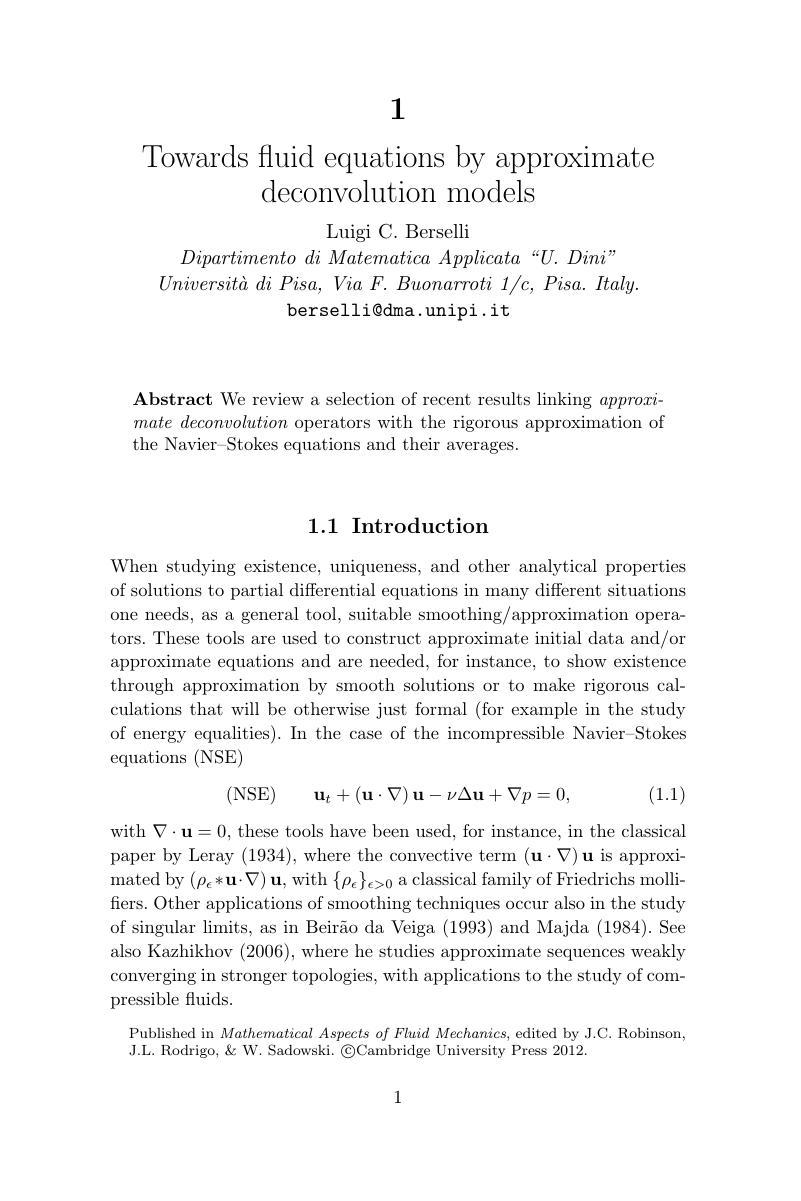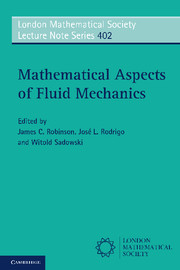Book contents
- Frontmatter
- Contents
- Preface
- List of Contributors
- 1 Towards fluid equations by approximate deconvolution models
- 2 On flows of fluids described by an implicit constitutive equation characterized by a maximal monotone graph
- 3 A continuous model for turbulent energy cascade
- 4 Remarks on complex fluid models
- 5 A naive parametrization for the vortex-sheet problem
- 6 Sharp and almost-sharp fronts for the SQG equation
- 7 Feedback stabilization for the Navier–Stokes equations: theory and calculations
- 8 Interacting vortex pairs in inviscid and viscous planar flows
- 9 Stretching and folding diagnostics in solutions three-dimensional Euler and Navier–Stokes equations
- 10 Exploring symmetry plane conditions in numerical Euler solutions
- 11 On the decay of solutions of the Navier–Stokes system with potential forces
- 12 Leray–Hopf solutions to Navier–Stokes equations with weakly converging initial data
- References
1 - Towards fluid equations by approximate deconvolution models
Published online by Cambridge University Press: 05 November 2012
- Frontmatter
- Contents
- Preface
- List of Contributors
- 1 Towards fluid equations by approximate deconvolution models
- 2 On flows of fluids described by an implicit constitutive equation characterized by a maximal monotone graph
- 3 A continuous model for turbulent energy cascade
- 4 Remarks on complex fluid models
- 5 A naive parametrization for the vortex-sheet problem
- 6 Sharp and almost-sharp fronts for the SQG equation
- 7 Feedback stabilization for the Navier–Stokes equations: theory and calculations
- 8 Interacting vortex pairs in inviscid and viscous planar flows
- 9 Stretching and folding diagnostics in solutions three-dimensional Euler and Navier–Stokes equations
- 10 Exploring symmetry plane conditions in numerical Euler solutions
- 11 On the decay of solutions of the Navier–Stokes system with potential forces
- 12 Leray–Hopf solutions to Navier–Stokes equations with weakly converging initial data
- References
Summary

- Type
- Chapter
- Information
- Mathematical Aspects of Fluid Mechanics , pp. 1 - 22Publisher: Cambridge University PressPrint publication year: 2012
References
- 1
- Cited by

